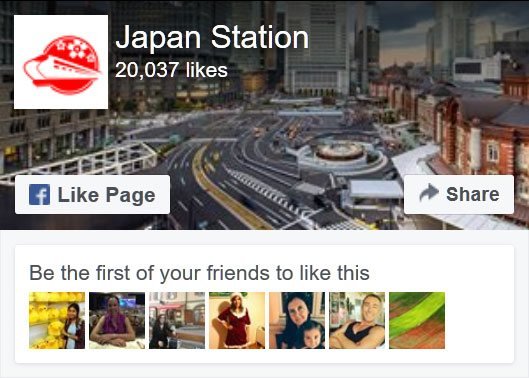Yamate is a historic district of Yokohama, which is also called “the Bluff” in English. During the late 19th and early 20th centuries, this area was the official settlement for foreigners living in Yokohama. Many of the elegant western style buildings that were built here during that time have been preserved by the city and several are open to the public and are free to enter.
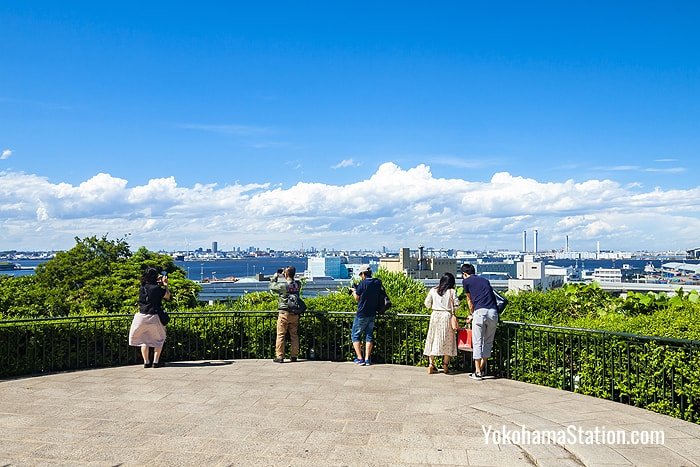
Looking over Yokohama Bay from Harbor View Park
Although Yamate is still a residential neighborhood, it is also one of Yokohama’s most popular tourist attractions with several parks, gardens and cafes as well as historic buildings. In this guide we will take you on a walking tour of this area’s most famous locations.
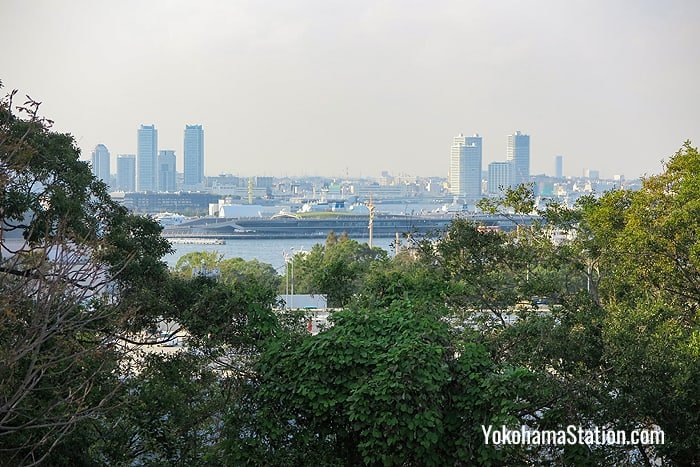
View from Harbor View Park
Harbor View Park (Minato-no-mieru-oka Koen)
A short walk from Motomachi-Chukagai Station, Harbor View Park is a good place to start your tour of Yamate. Take a moment to enjoy the view over Yokohama Bay from the park’s observation point and then walk through the English Rose Garden to reach the first building on our list – British House.
Harbor View Park is always open. Here is a map showing its location.
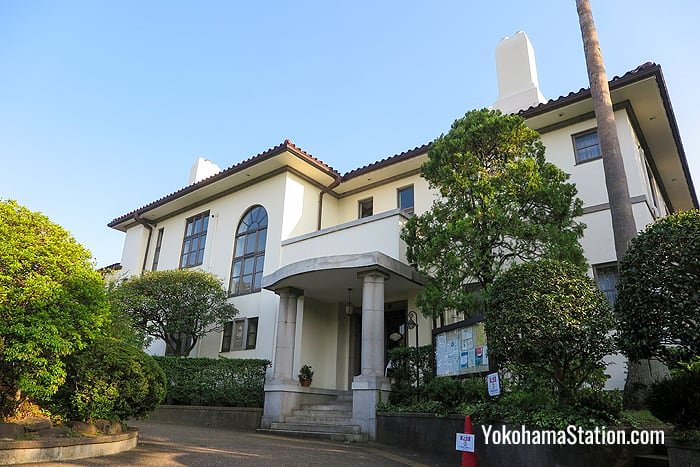
A front view of British House
British House
Built in 1937 as the residence of the British Consul General this house is now owned by Yokohama City and open to the public. Inside you can view the furnished rooms and enjoy a view over the garden and harbor from the wide windows on the 2nd floor The house is also sometimes used for concerts.
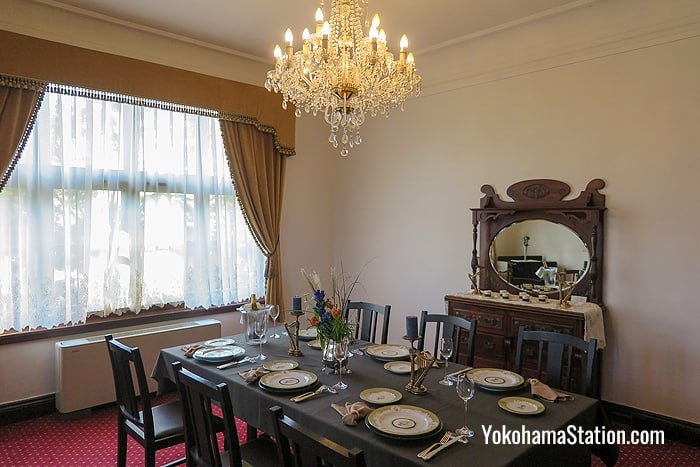
The dining room of British House
British House is open from 9.30 to 17.00 and closed on the fourth Wednesday of each month. It is also closed between December 29th and January 3rd. Entrance is free. Here is map showing its location.
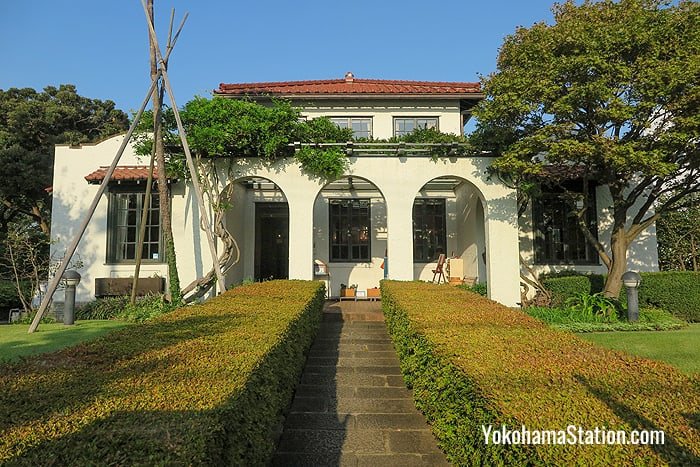
Bluff No. 111
Bluff No. 111
Bluff No. 111 is a 2-minute walk to the south of British House. This Spanish style house was built in 1929 for John Edward Laffin, an American citizen who was actually born and raised in Yokohama. The house was designed by the American architect, Jay Hill Morgan who also designed several other buildings in the Yamate district. Now owned by the city, this house is open to the public. A highlight of the interior is the large entrance hall and atrium with its glittering chandelier.
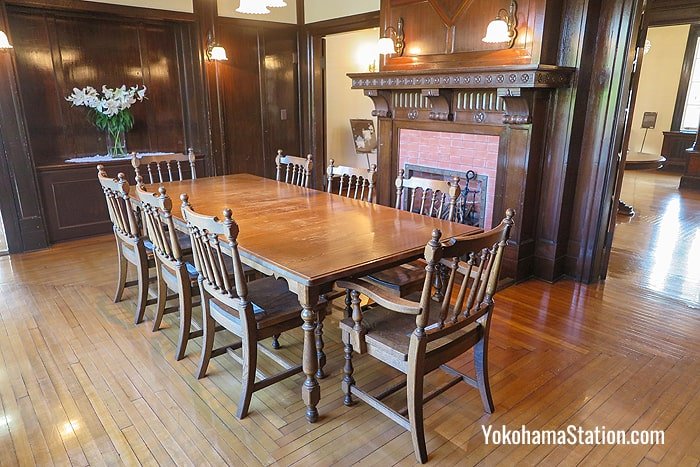
The dining room of Bluff No. 111
This house is open from 9.30 to 17.00 and closed on the second Wednesday of the month and the New Year’s holidays (December 29th – January 3rd). Entrance is free. Here is a map showing its location.
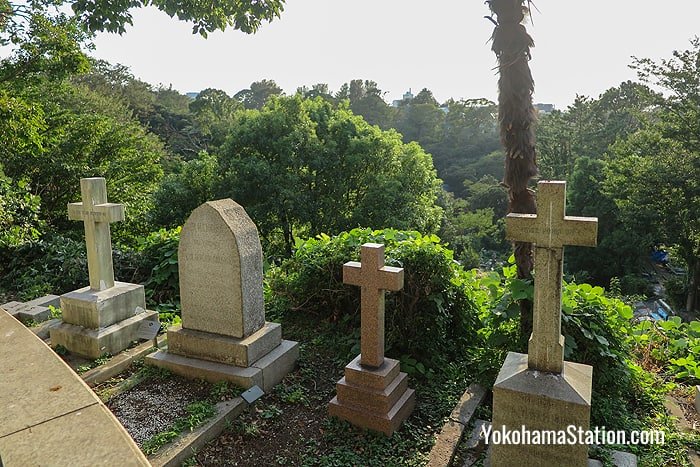
Yokohama Foreign General Cemetery
Yokohama Foreign General Cemetery
Yokohama Foreign General Cemetery is a five-minute walk northwest of Bluff No. 111. The first foreigner to be buried here was an American marine in 1854. Now there are around 3000 gravestones here inscribed with 5,000 names. The cemetery is usually closed but has open days when visitors can take a ten minute tour of the grounds with an English pamphlet that shows the most historically significant graves.
Open days are on weekends and public holidays between February and July and between September and December. A 500 yen donation for the cemetery’s upkeep is required for entry. There is also a small cemetery museum. Here is a map showing the cemetery’s location.
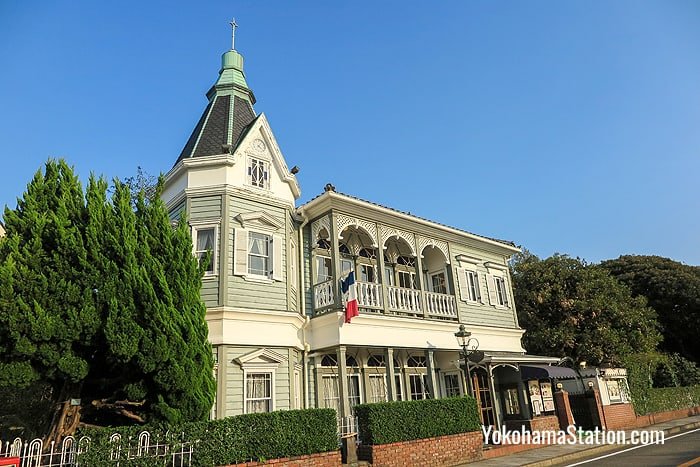
Yamate Jyubankan
Yamate Jyubankan Café and Restaurant
Yamate Jyubankan is one-minute south of the cemetery entrance. Although this building has an old-fashioned appearance it was actually built in 1967. There is a casual café on the first floor and on the second floor there is a French restaurant where you can enjoy lunch and dinner.
From Tuesday to Friday Yamate Jyubankan is open from 11.30 to 15.00 and 17.00 to 21.00. On weekends and holidays it is open from 11.00 to 15.30 and 18.00 to 21.00. It is closed on Mondays. Here is a map of its location.
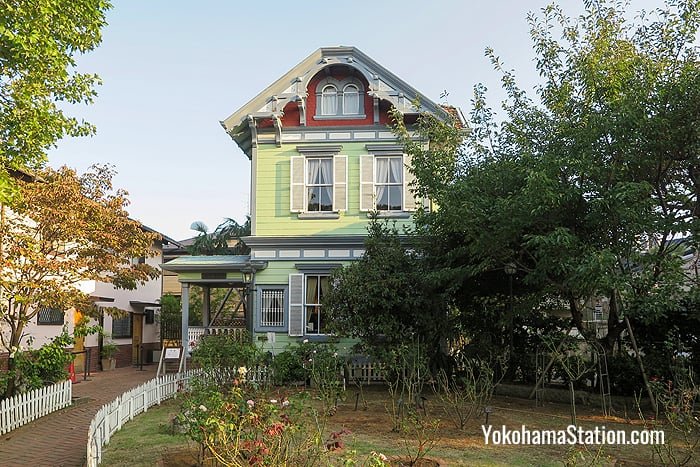
Yamate Museum
Yamate Museum
Yamate Museum is a minute’s walk south of Yamate Jyubankan. Built in 1909 it is the only remaining Western-style wooden building in Yokohama. Inside are exhibits related to Yamates’s history between the mid-19th century and the Great Kanto Earthquake of 1923.
The museum is open between 11.00 and 16.00 and closed on Mondays and for the New Year holidays (December 30th to January 1st). Entrance is free. Here is a map showing the location.
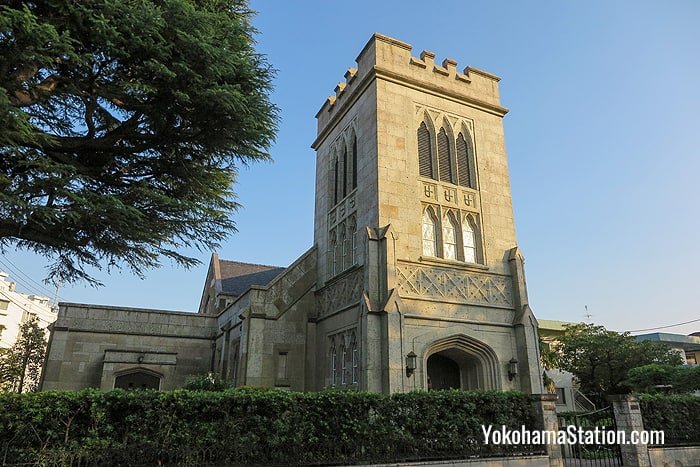
Yokohama Christ Church
Yokohama Christ Church
Yokohama Christ Church is a historic Anglican church, located close to the Yamate Museum. There has been a church of this name in Yokohama since 1864 but the first one was built in a different location. A second Christ Church was built on the current site in 1901. A red brick building designed by the famous British architect Josiah Conder, it was completely destroyed by the Great Kanto Earthquake in 1923. The current building was built in 1931 to a traditional Anglo-Norman design by the American architect Jay Hill Morgan, who also designed Bluff No. 111. This building was rebuilt to the same design after the bombing of 1945, and again after a fire in 2005. Here is a map showing the church’s location.
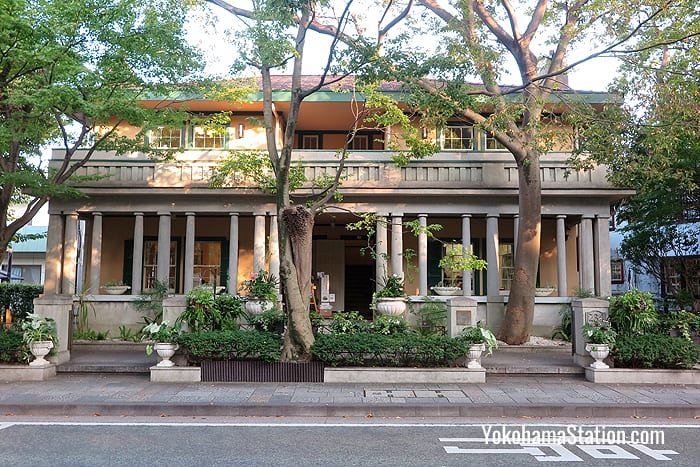
Bluff No. 234
Bluff No. 234
Bluff No. 234 was built in 1927 as an apartment building for foreigners. Designed by the Japanese architect Kichizo Asaka, there were originally four apartments in this building and it continued to be used as an apartment building until the 1970s. It is now owned by the city and open to the public. On the first floor are some recreated living spaces while the 2nd floor is used for exhibitions.

Inside Bluff No. 234
Bluff No. 234 is open from 9.30 to 17.00. It is closed on the fourth Wednesday of the month and during the New Year holidays (December 29th to January 3rd). Here is a map showing its location.
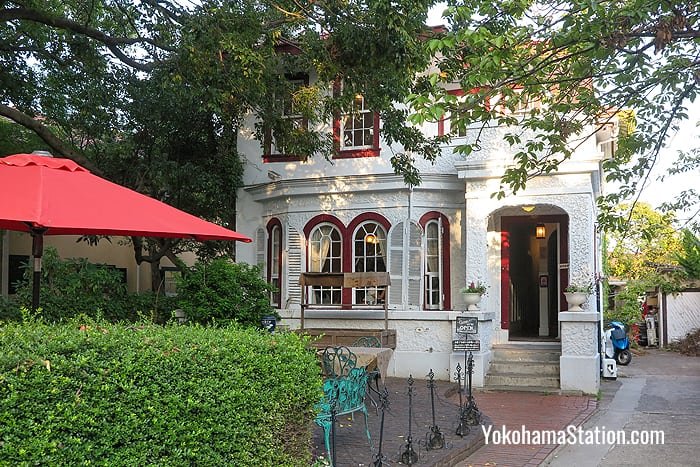
Enokitei
Enokitei
Right next door to Bluff No. 234 is Enokitei. Like its neighbor, it was built in 1927 and designed by Kichizo Asaka for an American resident. However, since 1979 it has operated as a café specializing in cakes and pastries. The café interior is decorated in a traditional western style with antique furniture.
Enokitei is open on weekdays from 12.00 to 17.30 and on weekends from 11.30 to 18.00. Here is a map showing its location.
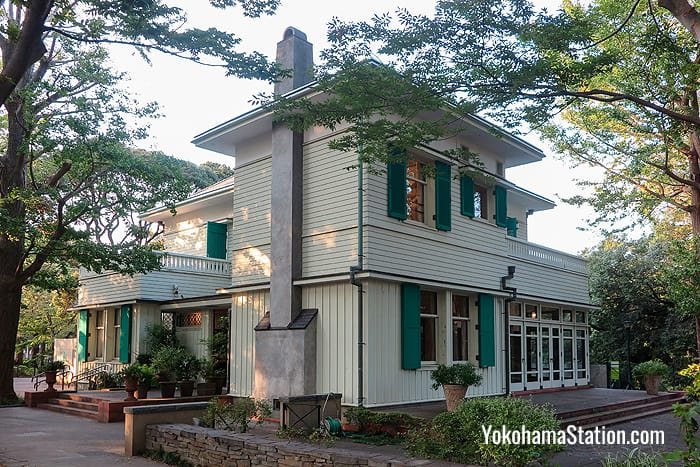
The Ehrismann Residence
Ehrismann Residence
The Ehrismann Residence is located inside Motomachi Park. Designed by Czech architect, Antonin Raymond, this house was built in 1926 for a Swiss silk merchant called Fritz Ehrismann. Originally in a different location, in 1982 it was dismantled to make way for new apartments. The city bought the dismantled house and had it reassembled in its current location. Inside you can view some of the furniture designed by Raymond, photographs and drawings of Yamate in the past, and there is a tearoom in the old kitchen area.
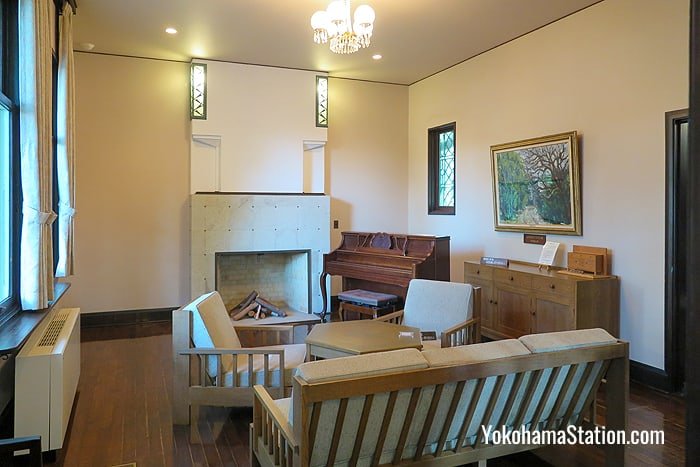
Inside the Ehrismann Residence
The Ehrismann Residence is open to the public between 9.30 and 17.00. It is closed on the second Wednesday of the month and during the New Year holidays (December 29th to January 3rd). Entrance is free. Here is a map showing its location.
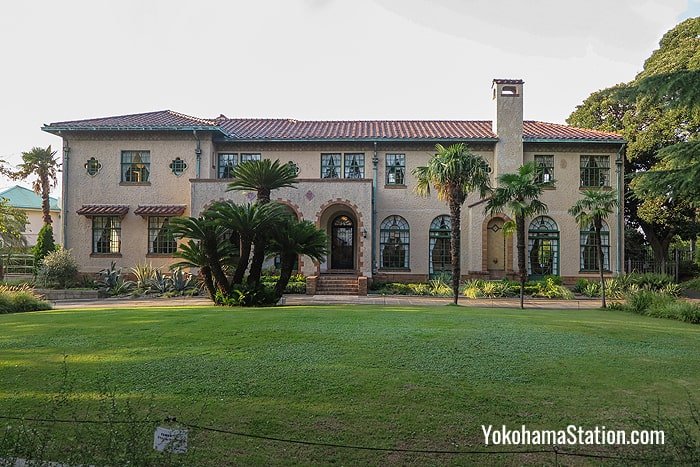
Berrick Hall
Berrick Hall
Also located in Motomachi Park, Berrick Hall is a Spanish style residence that was built for the British trader B. R. Berrick in 1930. Like Bluff No. 111 and Christ Church, it was designed by Jay Hill Morgan. It is the largest surviving pre-war foreign residence in Yamate and is now owned by the city. Open to the public, the interior has been restored to its pre-war appearance.
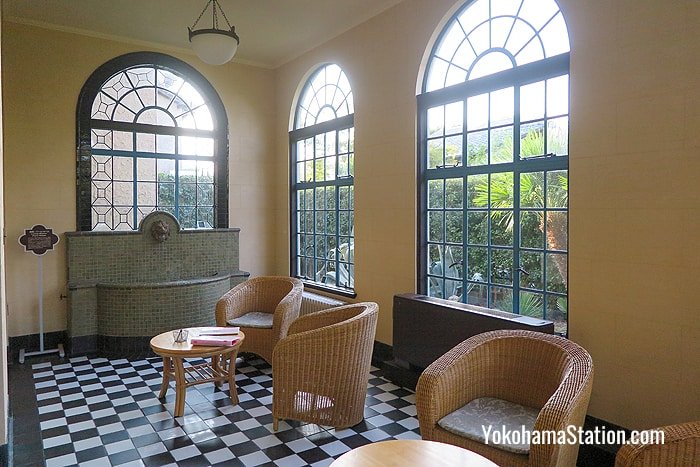
Inside Berrick Hall
Berrick Hall is open from 9.30 to 17.00. It is closed on the second Wednesday of the month and during the New Year holidays (December 29th to January 3rd). Entrance is free. Here is a map showing its location.
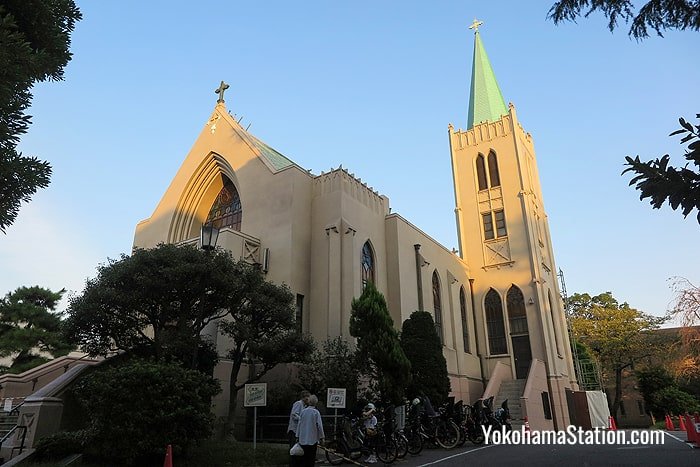
Sacred Heart Cathedral
Sacred Heart Cathedral
A five-minute walk to the west of Motomachi Park is the Catholic Sacred Heart Cathedral, which claims to be the oldest church in Japan. First built in a different location in 1862, this church was moved to this site in 1906 and then completely destroyed in the Great Kanto Earthquake of 1923. The current Neo-Gothic building dates from 1933 and was designed by the Czech architect Jan Josef Švagr. Here is a map showing its location.
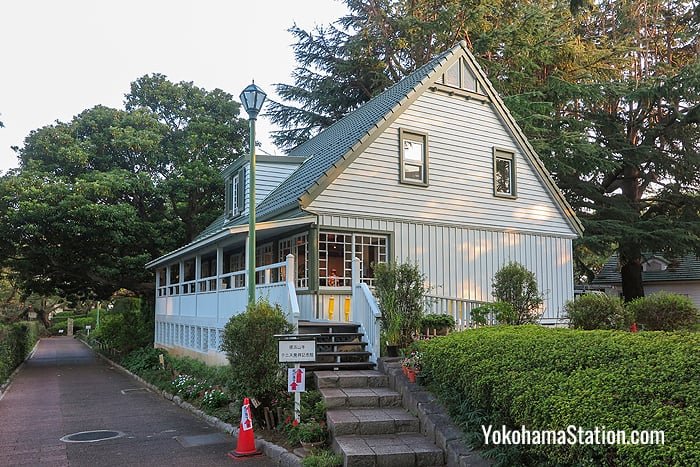
Yokohama Yamate Museum of Tennis
Yokohama Yamate Museum of Tennis
Yamate Park is a 3-minute walk south of Sacred Heart Cathedral. This park is the birthplace of tennis in Japan and the tennis courts here date back to 1878. Inside the park is the Yamate Museum of Tennis which has a variety of exhibits on display such as antique tennis rackets, old fashioned tennis clothes, photographs and other tennis memorabilia.
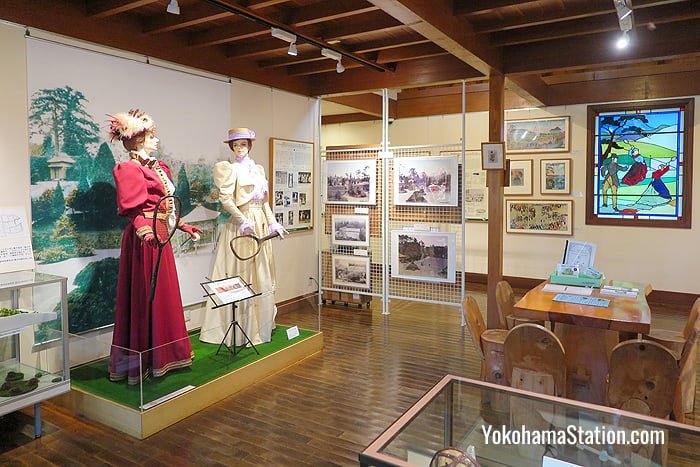
Inside the Museum of Tennis
The museum is open from 9.30 to 17.00. It is closed on the third Monday of the month and during the New Year holidays (December 29th to January 3rd). Entrance is free. Here is a map showing its location.
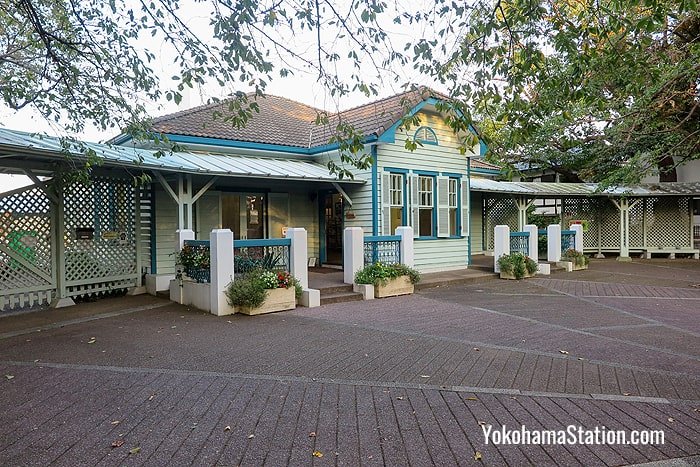
Former Bluff No. 68
Former Bluff No. 68
Close by the Museum of Tennis is Former Bluff No. 68. This house was built as a rental property for foreigners in 1934. It is called “Former” Bluff No. 68 because in 1986 it was moved from its original location on the Bluff to its current location inside Yamate Park. Today it is used as a club house for the tennis courts and as a management office for the park.
Former Bluff No. 68 is open from 9.00 until 19.00 between mid-May and mid-August and until 17.00 during the rest of the year. It is closed on the third Monday of the month and during the New Year holidays (December 29th to January 3rd). Entrance is free. Here is a map showing its location.

Bluff No. 18
Bluff No. 18
Walk 10 minutes northwest of Yamate Park and you will come to a beautiful ornamental park called Yamate Italian Garden. Inside the garden there are two houses. The first house, Bluff No. 18, was built as a foreign residence after the Great Kanto Earthquake of 1923. Originally in a different part of Yamate it was moved to the garden in 1991. Inside the interior décor of a foreign residence in the 1920s has been recreated with authentic furniture of that era. There is also a gallery for exhibitions in an attached annex.
Bluff No. 18 is open from 9.30 to 17.00. It is closed on the second Wednesday of the month and during the New Year holidays (December 29th to January 3rd). Entrance is free. Here is a map showing its location.
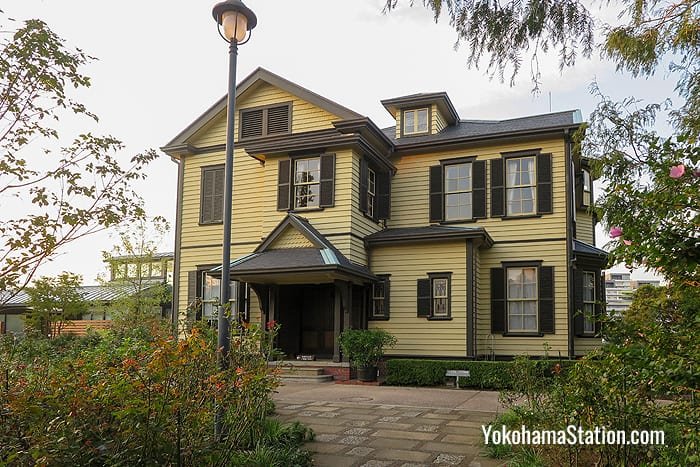
The Home of a Diplomat
Home of a Diplomat
The second house in the Italian Garden is the Home of a Diplomat. This American-style house was built in 1910 for a diplomat in the Meiji government in Tokyo, but moved to Yamate in 1997. Inside the restored dining room, guest rooms, study, living room and bedrooms give visitors a view of life in the early 20th century.
The Home of a Diplomat is open from 9.30 to 17.00. It is closed on the fourth Wednesday of the month and during the New Year holidays (December 29th to January 3rd). Entrance is free. Here is a map showing its location.
Location
The Yamate district is located a little to the south of Motomachi Shopping Street. In this guide we took an east-west course walking from Harbor View Park to Yamate Italian Garden, but you could easily walk the same route in reverse. Harbor View Park is a 3-minute walk from Motomachi-Chukagai Station on the Minatomirai Line. Yamate Italian Garden is a 5-minute walk from Ishikawacho Station on the JR Negishi Line. The Akai Kutsu flat fare sightseeing bus also stops at Harbor View Park.
Article and original photos by Michael Lambe. All rights reserved.
